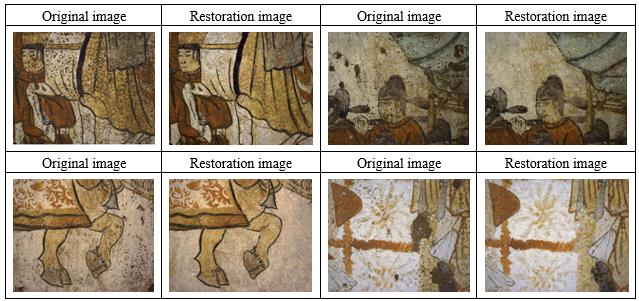A team led by ZHANG Pengchang and QIU Shi from Xi'an Institute of Optics and Precision Mechanics, Chinese Academy of Sciences, has proposed a model based on hyperspectrum for murals virtual restoration by studying the hyperspectral properties of pigments. The result has published in Heritage Science.
Murals have significant historical and artistic importance, but over time, they may degrade due to varying degrees of human destruction and environmental factors. Therefore, it is crucial to carry out virtual restoration. Hyperspectrum encompassing both spatial and spectral dimensions is a novel and significant method for acquiring image data.
Therefore, the research team adopts hyperspectrum for virtual restoration of ancient tomb murals. Based on the theory of visual perception, they established the hyperspectral pigment database to provide a basis for the identification and restoration of mural pigments.
Using the spatial and material characterization capabilities of hyperspectral imaging, they designed a convolutional neural network model for virtual restoration of murals. The results exhibits that algorithm achieves superior results by subjective and objective experimental validation, which opening up a new direction for murals virtual restoration.
"The development of imaging technology and artificial intelligence will enable hyperspectral technology, with its unique advantages, to significantly contribute to advance cultural relic archaeology and scientific and technological archaeology." Said Prof. Pengchang Zhang.
(Available online 22 November 2024)

Fig. Restoration effect exhibition.(Image by XIOPM)
Download: